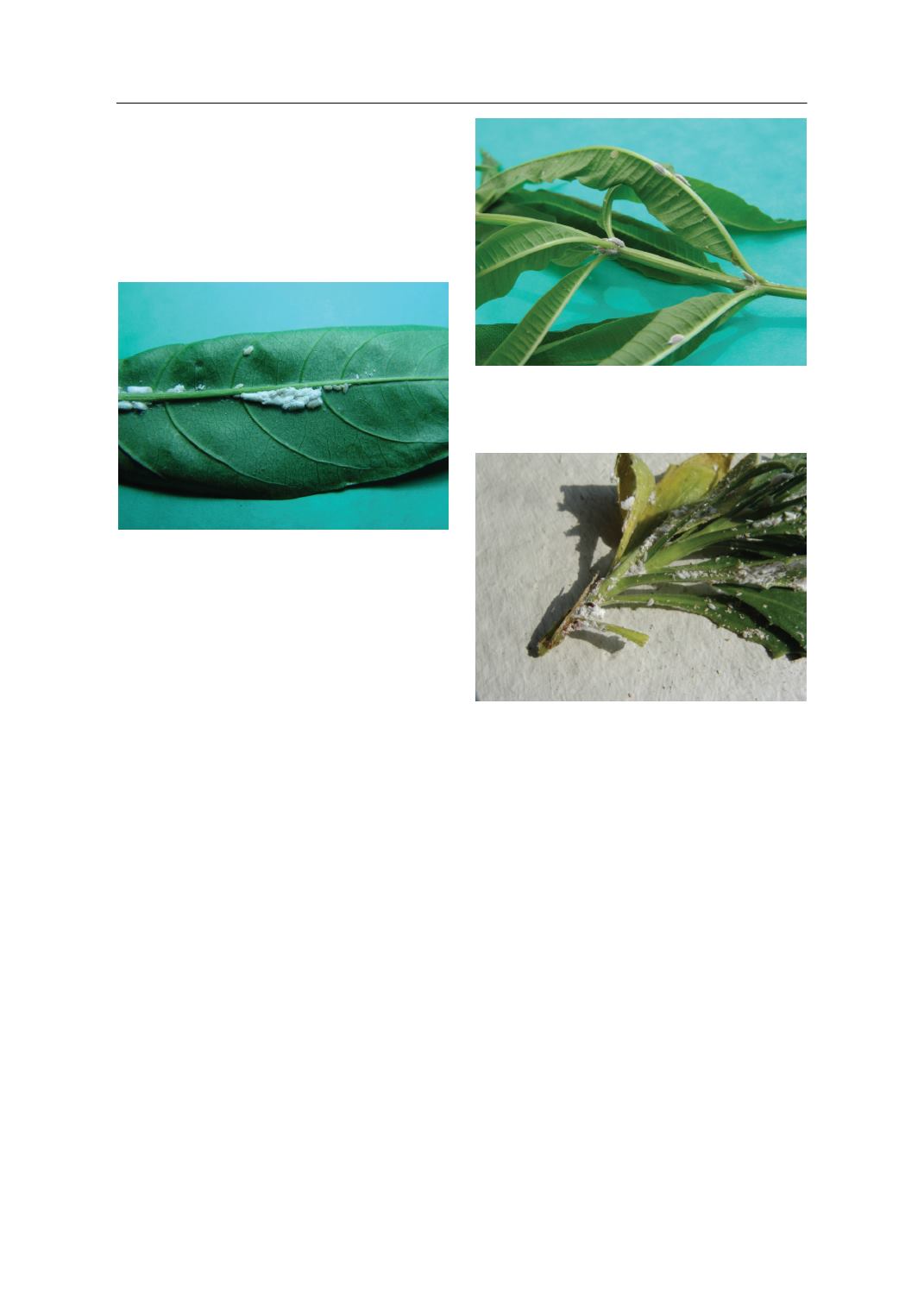
© Benaki Phytopathological Institute
Phenacoccus
species on new host plants in Greece
13
was recorded in the suburb of Athens, Papa-
gou (37°59’35.2”N, 23°48’31.8”E), where the
mealybug was found on
Cestrum nocturnum
(Solanaceae) in September 2013 (Fig. 1). The
identification of
P. peruvianus
was made by
Dr M. Bora Kaydan (Çukurova University of
Adana, Turkey).
The Madeira mealybug,
P. madeirensis,
is considered to have a New World origin. It
was described by Green (1923) and its name
was derived fromMadeira Islands. In Europe,
its first reports were from Western Mediter-
ranean region, Sicily and later from France
(Jansen
et al.,
2010). Jansen
et al.
(2010) re-
corded Madeira mealybug in Crete on
Hi-
biscus rosa-sinensis
(Solanaceae) in 2010
and indicated that this mealybug has been
spreading to wider territories in the Medi-
terranean region.
In this study,
P. madeirensis
was record-
ed in the town of Kalamata (37°02’17.0”N,
22°04’41.2”E) on
Aloysia citriodora
in May
2014 and at the same area on
Osteospermum
jucundum
(Phillips) (Asteraceae) in July 2014
(Fig. 2, Fig. 3). The identification of the spe-
cies was made by Professor Giuseppina Pel-
lizzari (University of Padua, Italy). According
to ScaleNet Database (Ben-Dov
et al.,
2013),
O. jucundum
is a new host plant of
P. madei-
rensis.
Although the above mentioned invasive
mealybug species have already been re-
corded in Greece, it is wise to encourage the
study of their distribution in other areas of
the country. Invasive species can sometimes
have a great impact on biodiversity, modi-
fy the habitat and cause extensive environ-
mental and economic destruction. In recent
years, several species of economically im-
portant mealybug pests (Pseudococcidae)
have been introduced into different coun-
tries in the Mediterranean Region and oth-
er areas of the Palaearctic Region (Kaydan
et
al.,
2012).
The authors would like to express their grati-
tude to Dr M. Bora Kaydan, Çukurova Univer-
sity, Adana, Turkey, for the identification of
Phenacoccus peruvianus
and to Professor
Giuseppina Pellizzari, University of Padova,
for the identification of
Phenacoccus madei-
rensis
.
Figure 1.
Phenacoccus peruvianus
on
Cestrumnocturnum
(Pho-
to by G.J. Stathas).
Figure 2.
Phenacoccus madeirensis
on
Aloysia citriodora
(Pho-
to by G.J. Stathas).
Figure 3.
Phenacoccus madeirensis
on
Osteospermum jucun-
dum
(Photo by G.J. Stathas).


